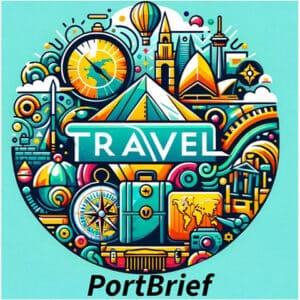The San Pedro Underwater Archaeological Preserve State Park is a unique site that offers a glimpse into the past, with its well-preserved shipwrecks and rich marine life, making it an ideal destination for underwater archaeology enthusiasts. Located in 18 feet of water, approximately 1.25 nautical miles south of Indian Key, this preserve is home to at least 10 species of living corals and a variety of other marine life.
As we explore the San Pedro Underwater Archaeological Preserve State Park, we will delve into the history of the San Pedro, a Dutch-built sailing ship that was part of a fleet voyage from Havana, Cuba to Spain in the summer of 1733. The wreck of the San Pedro was discovered in the 1960s and was chosen to become Florida’s second Underwater Archaeological Preserve in 1988, showcasing the importance of underwater archaeology in preserving our cultural heritage.
The San Pedro Underwater Archaeological Preserve State Park is not only a historical site but also a popular destination for diving enthusiasts, with its well-preserved shipwrecks and rich marine life, making it an ideal spot for underwater archaeology exploration. As we learn more about this preserve, we will discover the significance of San Pedro Underwater Archaeological Preserve State Park and the importance of underwater archaeology in understanding our past.
Key Takeaways
- The San Pedro Underwater Archaeological Preserve State Park is a unique site that offers a glimpse into the past, with its well-preserved shipwrecks and rich marine life.
- The preserve is home to at least 10 species of living corals and a variety of other marine life, making it an ideal destination for underwater archaeology enthusiasts.
- The San Pedro was a Dutch-built sailing ship that was part of a fleet voyage from Havana, Cuba to Spain in the summer of 1733.
- The wreck of the San Pedro was discovered in the 1960s and was chosen to become Florida’s second Underwater Archaeological Preserve in 1988.
- The San Pedro Underwater Archaeological Preserve State Park is open to the public year-round, free of charge, making it an accessible destination for anyone interested in underwater archaeology.
- The preserve serves as one of Florida’s oldest artificial reefs, providing a habitat for a variety of marine life.
Introduction to San Pedro Underwater Archaeological Preserve
The San Pedro Underwater Archaeological Preserve is a unique and fascinating destination located in the Florida Keys, part of the Florida state parks system. This preserve is recognized for its historical and ecological importance, with over 200 historic shipwrecks documented in the region.
As part of the Florida state parks system, the San Pedro Preserve is dedicated to protecting and conserving the site for future generations. The preserve’s mission includes promoting education, research, and responsible tourism, allowing visitors to experience the beauty and significance of the historic shipwrecks while minimizing their impact on the environment.
Overview of the Preserve’s Significance
The San Pedro Preserve is home to more than 40 historic shipwrecks that are protected under federal law, with the average depth of the shipwrecks ranging from 40 to 70 feet. This makes it an ideal location for snorkeling and diving, with estimated visitor numbers reaching about 10,000 annually, contributing to local tourism.
Mission and Goals of the Preserve
The preserve’s goals include promoting education, research, and responsible tourism, as well as conserving the site’s natural and cultural resources. By visiting the San Pedro Underwater Archaeological Preserve, visitors can support the preservation of Florida state parks and the protection of historic shipwrecks for future generations.
Location and Accessibility
The San Pedro Underwater Archaeological Preserve is located in 18 feet of water, approximately 1.25 nautical miles south of Indian Key, making it an ideal spot for scuba diving and snorkeling. This preserve is home to a diverse array of marine life, attracting visitors from all over the world.
To get to the preserve, visitors can take a private boat or charter a boat from nearby Indian Key. The island is also accessible by kayak or paddleboard for those looking for a more adventurous journey.
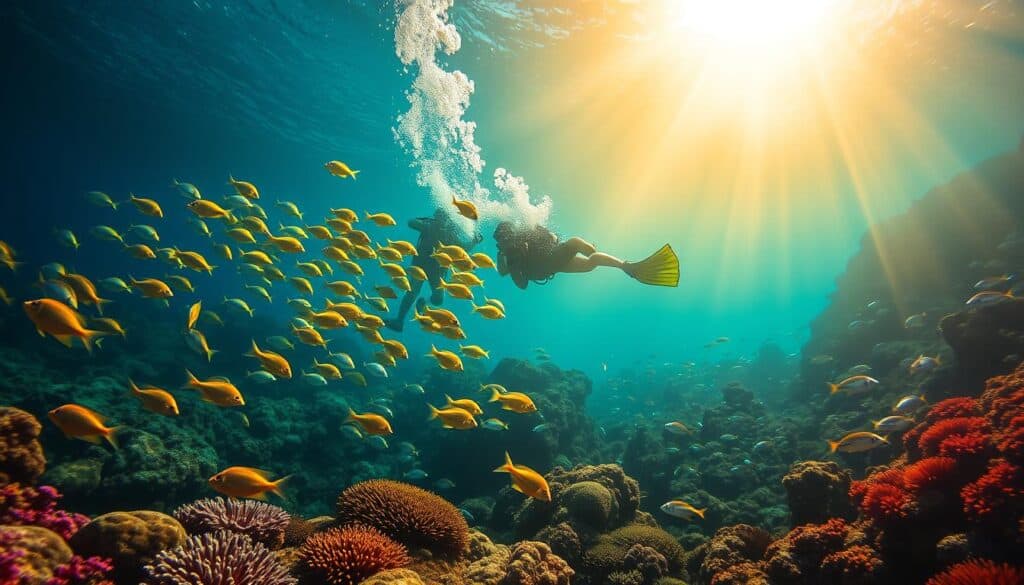
Once at the preserve, visitors can explore the marine life and shipwreck site, which spans 90 feet long and 30 feet wide. The site is perfect for scuba diving enthusiasts, with its clear waters and abundant sea life.
Some nearby attractions include:
- Indian Key Historic State Park
- Lignumvitae Key Botanical State Park
- John Pennekamp Coral Reef State Park
These parks offer a range of activities, including hiking, bird-watching, andscuba diving, making the area a paradise for outdoor enthusiasts.
| Park Name | Location | Activities |
|---|---|---|
| Indian Key Historic State Park | Indian Key | Hiking, bird-watching |
| Lignumvitae Key Botanical State Park | Lignumvitae Key | Kayaking, paddleboarding |
| John Pennekamp Coral Reef State Park | Key Largo | Scuba diving, snorkeling, glass-bottom boat tours |
Historical Background of San Pedro Preserve
The San Pedro Underwater Archaeological Preserve has a rich and fascinating history, with the shipwreck of the San Pedro being a significant part of it. This 287-ton Dutch-built vessel sank in a hurricane on July 13, 1733, as part of a Spanish flotilla. The ship was carrying a valuable cargo, including 16,000 silver Mexican pesos and crates of Chinese porcelain, making it an important part of the maritime heritage sites in the area.
The preserve is not only significant for its historical value but also for its role in conservation efforts. The Florida Keys National Marine Sanctuary was created in 1990 to protect the wreck sites and the preserve, and removal of artifacts from the wreck sites is currently prohibited. This has helped to preserve the site and its contents, allowing for further research and exploration.
Some key facts about the San Pedro shipwreck include:
- It was part of a fleet of 22 Spanish ships that departed Havana, Cuba, on July 13, 1733.
- The ship carried 16,000 pesos in Mexican silver along with numerous crates of Chinese porcelain.
- The wreck was discovered in the 1960s in Hawk Channel.
- Silver coins recovered from the site date back to between 1731 and 1733.
The San Pedro shipwreck site became a State of Florida Underwater Archaeological Preserve in 1989, and elements of the ship’s hardware and rigging, along with remnants of cargo, were salvaged from the wreck. The photogrammetric model of the site was created in June 2019 by scientific divers from Indiana University, providing a detailed and accurate representation of the site.
Underwater Ecosystem Overview
The San Pedro Preserve is home to a diverse range of marine life, with over 65 species of fish and 10 different species of coral. This ecosystem is not only fascinating for diving enthusiasts but also plays a crucial role in maintaining the health of our oceans.
The preserve’s unique location and conditions support a complex web of life, with many species relying on each other for survival. As diving enthusiasts explore the preserve, they can observe this delicate balance firsthand and gain a deeper appreciation for the importance of conservation efforts.
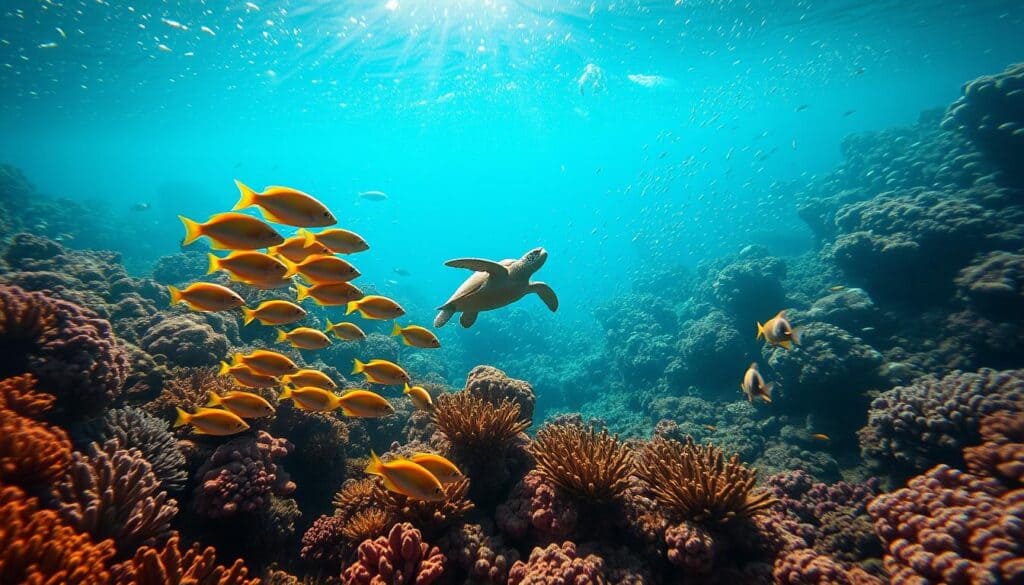
To protect this incredible ecosystem, it is essential to support conservation efforts and promote sustainable practices among diving enthusiasts and the broader community. By working together, we can help preserve the beauty and diversity of marine life in the San Pedro Preserve for future generations to enjoy.
Some key ways to get involved in conservation efforts include:
- Supporting organizations that work to protect and restore marine life habitats
- Participating in beach cleanups and other community events
- Spreading awareness about the importance of conservation and sustainable practices
By taking these steps, diving enthusiasts and others can help make a positive impact on the marine life in the San Pedro Preserve and contribute to a healthier, more sustainable ecosystem.
Activities Available at San Pedro Preserve
San Pedro Underwater Archaeological Preserve State Park offers a range of exciting activities for visitors to enjoy, including snorkeling and diving experiences that allow exploration of the underwater archaeology of the area. The preserve is located within the Florida state parks system, which provides a unique opportunity for visitors to experience the natural beauty of the state’s underwater world.
Guided tours and educational programs are also available, providing visitors with a deeper understanding of the preserve’s history and significance. These programs are designed to be engaging and informative, making them suitable for visitors of all ages. The preserve’s location within the Florida state parks system also makes it an ideal destination for those interested in underwater archaeology and the natural beauty of the state’s coastal areas.
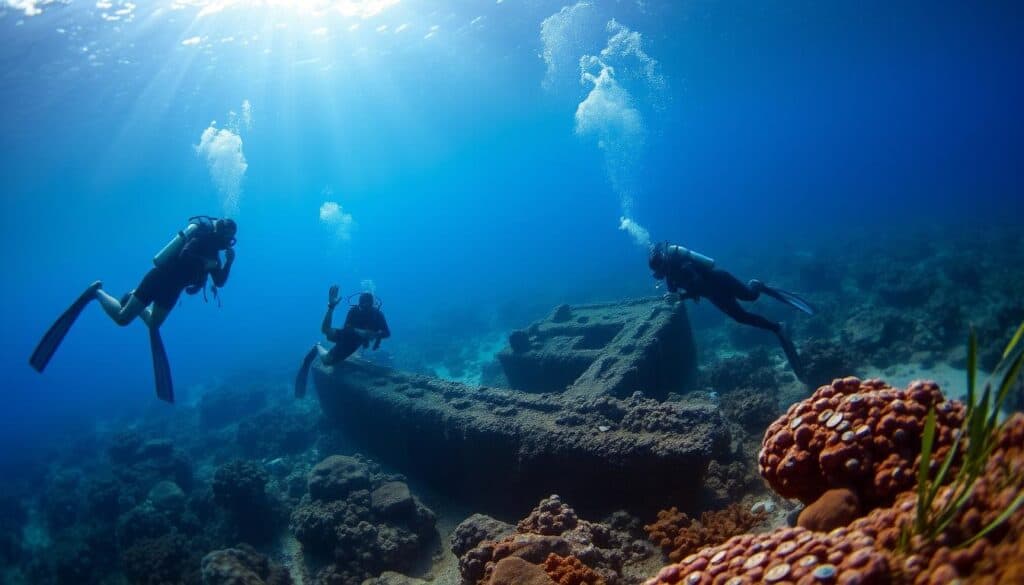
- Snorkeling and diving to explore the underwater archaeology of the area
- Guided tours to learn about the history and significance of the preserve
- Education programs to learn about the natural beauty of the Florida state parks
These activities provide a unique and exciting way to experience the beauty of the San Pedro Underwater Archaeological Preserve State Park, and to learn about the importance of preserving ourunderwater archaeologyand natural resources.
Planning Your Visit
Before you embark on your journey to the San Pedro Underwater Archaeological Preserve, it’s essential to plan your visit carefully. The best time to visit the preserve is during the spring and summer months when the water is calm and clear, making it ideal for scuba diving and exploring the historic shipwrecks.
When planning your trip, consider the following:
- Check the weather forecast before you go to ensure that the conditions are suitable for diving and exploring the preserve.
- Make sure you have the necessary gear and supplies, including a diving certification, wetsuit, and underwater camera.
- Book a guided tour with a reputable operator to ensure that you get the most out of your visit and stay safe while exploring the preserve.
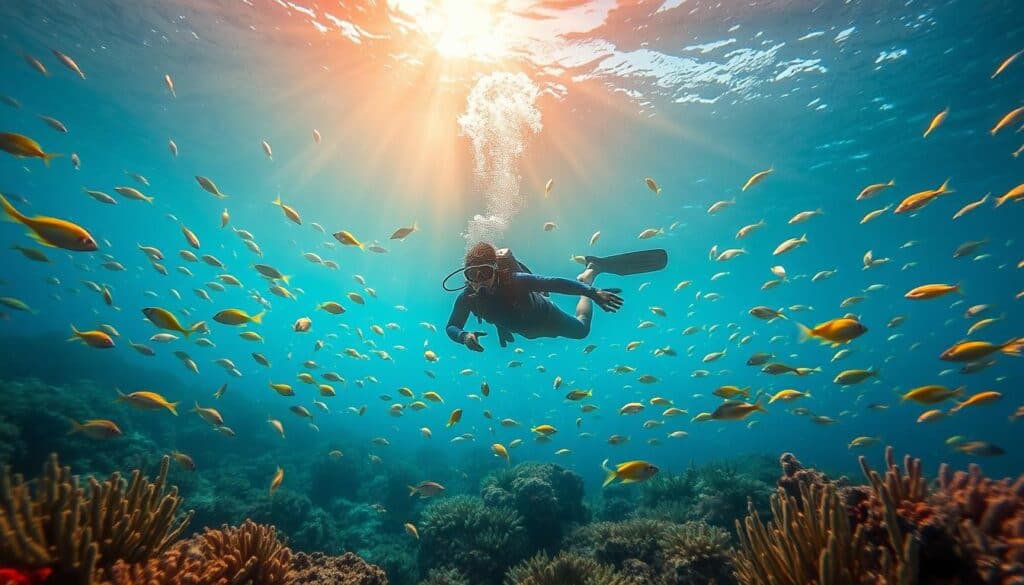
By planning your visit carefully and being prepared, you can have a safe and enjoyable experience exploring the San Pedro Underwater Archaeological Preserve and its historic shipwrecks. Remember to respect the preserve and its inhabitants, and to follow all guidelines and regulations to ensure the preservation of this unique and fascinating ecosystem for future generations to enjoy scuba diving and exploring.
Safety Considerations for Visitors
When visiting the San Pedro Underwater Archaeological Preserve, it is essential to prioritize safety considerations to protect both the visitors and the marine life. The preserve is home to a diverse array of marine species, and conservation efforts are in place to ensure the long-term health of the ecosystem.
To promote safe diving practices, visitors are required to follow established guidelines and regulations. This includes being aware of their surroundings, respecting the marine environment, and not touching or removing any artifacts or marine life. By taking these precautions, visitors can help preserve the integrity of the preserve and ensure a safe and enjoyable experience for themselves and others.
Some key safety considerations for visitors include:
- Following established diving safety guidelines
- Respecting the marine environment and not touching or removing any artifacts or marine life
- Being aware of their surroundings and watching for potential hazards
By prioritizing safety and conservation efforts, visitors can help protect the San Pedro Underwater Archaeological Preserve and its incredible marine life for future generations to enjoy.
| Preserve | Year Established | Notable Features |
|---|---|---|
| San Pedro | 1989 | Living coral and marine life |
| Urca de Lima | 1987 | Recognizable features and accessible to the public |
Understanding the Archaeological Sites
The San Pedro Underwater Archaeological Preserve is a significant site for underwater archaeology, featuring several archaeological sites, including the wreck of the San Pedro. This site provides valuable insights into the maritime heritage sites of the past, with the wreck of the San Pedro being a notable example.
The preserve is located in 18 feet of water, approximately 1.25 nautical miles south of Indian Key. The wreck site supports at least 10 species of living corals, and the ballast mound related to the wreck measures 90 feet long and 30 feet wide.
Some key facts about the San Pedro wreck include:
- It was a Dutch-built galleon that weighed 287 tons.
- It was carrying 1,600 pesos in Mexican silver at the time of its wreck.
- The recovered small silver coins date back to between 1731 and 1733.
The preservation of underwater artefacts is crucial for understanding the past and the importance of maritime heritage sites. The San Pedro wreck is a significant example of an early 18th-century shipwreck, offering an intact example of the era’s underwater archaeology.
The Role of Technology in Exploration
Technology plays a vital role in the exploration and conservation of underwater archaeological sites, including those in Florida state parks. For diving enthusiasts, advancements in technology have made it possible to explore and learn about these sites in greater detail.
The use of submersibles and drones has been particularly significant in this regard. These tools allow researchers to explore and document underwater sites with greater ease and accuracy, providing valuable insights into the history and ecology of these areas.
Advancements in Research Methods
In addition to submersibles and drones, innovative research methods are being developed to study underwater archaeological sites. These methods include the use of virtual and augmented reality technologies, which can help to preserve and promote these sites for future generations.
By leveraging these technologies, diving enthusiasts and researchers can work together to advance our understanding of underwater archaeological sites and promote their conservation. This collaboration is essential for protecting these sites and ensuring that they remain accessible for future generations.
Community Involvement and Support
The San Pedro Underwater Archaeological Preserve relies on community involvement and support for its conservation efforts. The preserve is part of the Islamorada Area State Parks, which encompass over 10,000 acres of protected lands. This extensive area provides numerous opportunities for community engagement and environmental conservation.
Volunteering opportunities are available on Fridays, Saturdays, and Sundays, indicating peak activity periods for community involvement. Volunteers must be at least 16 years old and adhere to Covid-19 safety standards. The parks operate from 8 am to 5 pm daily, providing a defined time frame for volunteer activities.
The community can get involved in various ways, including:
- Volunteering for park docent positions
- Participating in preservation projects at historical sites
- Collaborating with partners to preserve Florida’s natural and cultural resources
The preserve’s marine life is an essential part of its ecosystem, and community involvement is crucial for its conservation. By working together, we can protect the preserve’s natural and cultural resources for future generations.
Impact of Climate Change on the Preserve
Climate change poses significant challenges to the San Pedro Underwater Archaeological Preserve, including rising sea temperatures and increased storm activity. This affects not only the historic shipwrecks but also the entire ecosystem, making underwater archaeology more complex.
The preserve’s unique environment, with its shallow water coral reefs and coral communities, is particularly vulnerable to climate change. The Florida Reef Tract, which extends approximately 577 kilometers, is home to a diverse range of stony coral species, including over 30 species in the complex regions from northern Broward County to Miami-Dade County.
Some of the key challenges facing underwater archaeology in the preserve include:
- Rising sea temperatures, which can cause coral bleaching and damage to historic shipwrecks
- Increased storm activity, which can lead to sedimentation and erosion of the reef
- Changes in ocean chemistry, which can affect the growth and survival of coral and other marine life
To mitigate these effects, researchers and conservationists are working together to develop strategies for preserving the preserve’s unique ecosystem. This includes monitoring water quality, reducing pollution, and promoting sustainable tourism practices.
By taking proactive steps to address the impacts of climate change, we can help protect the San Pedro Underwater Archaeological Preserve and its incredible historic shipwrecks for future generations to enjoy and study.
| Category | Description |
|---|---|
| Coral Reefs | Shallow water coral reefs and coral communities, home to over 30 species of stony coral |
| Historic Shipwrecks | Unique and historic shipwrecks, including the 1733 San Felipe |
| Underwater Archaeology | Complex and challenging field of study, affected by climate change and other environmental factors |
Conclusion: The Future of San Pedro Preserve
The future of the San Pedro Preserve, a remarkable maritime heritage site, lies in the continued dedication to research, exploration, and sustainable practices. As custodians of this underwater wonderland, it is our responsibility to ensure its protection for generations to come.
Continuing Research and Exploration
The San Pedro Preserve is a treasure trove of untold stories, waiting to be uncovered through meticulous research and innovative exploration. By utilizing the latest advancements in technology, such as submersibles and drones, researchers can delve deeper into the preserve’s submerged archaeological sites, unraveling the secrets of the past. This ongoing commitment to discovery will not only enhance our understanding of the region’s maritime history but also inspire future generations of diving enthusiasts and maritime heritage enthusiasts.
Encouraging Sustainable Practices among Visitors
With the growing popularity of the San Pedro Preserve as a premier diving destination, it is essential to promote sustainable tourism practices among visitors. By educating visitors on the fragile nature of the underwater ecosystem and the importance of responsible exploration, we can empower them to become stewards of this remarkable maritime heritage site. Through partnerships with local communities and conservation organizations, the preserve can continue to thrive, ensuring that its unique blend of history, ecology, and adventure remains accessible for years to come.
